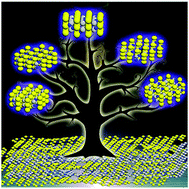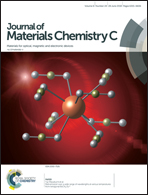High photoluminescence quantum yield of 18.7% by using nitrogen-doped Ti3C2 MXene quantum dots†
Abstract
Quantum dots, derived from two-dimensional (2D) materials, have shown promising applications in bioimaging, photocatalysis, biosensors and white light emission devices (W-LEDs). Herein, this work involves producing a high photoluminescence quantum yield (PLQY) for 2D transition metal carbide MXene (nitrogen-doped, N-doped Ti3C2) quantum dots using Ti3C2 as a precursor and ethylenediamine as a nitrogen source. The hydrothermally treated N-doped Ti3C2 quantum dots developed in this study have an average size of 3.4 nm and a PLQY of up to 18.7%, which is by far the highest QY reported to date. The mechanism of the enhanced PLQY of the N-doped Ti3C2 quantum dots is systematically discussed by using comprehensive spectroscopic techniques (e.g. grazing incidence X-ray diffraction (GIXRD)) and complementary density functional theory (DFT) calculations. Furthermore, the N-doped Ti3C2 quantum dots are applied as an ultra-sensitive heavy iron ion (Fe3+) detector probe with a detection limit of up to 100 μM. Additionally, the as-developed MXene quantum dots have huge prospects in biological sensing by functioning as an appealing mediator-free biosensor for the detection of H2O2 with high sensitivity. Overall, this work will provide a blueprint for the design of 2D-QDs based on MXene toward meeting the continuous upsurge in demand for a plethora of technological applications such as electronics, solar cells, optical, biomedical, and environmental fields.



 Please wait while we load your content...
Please wait while we load your content...